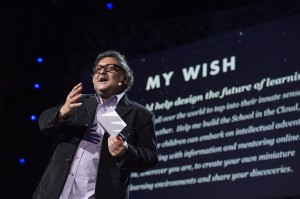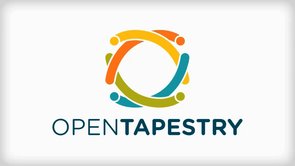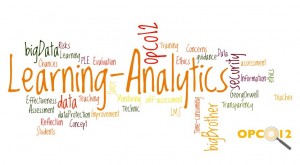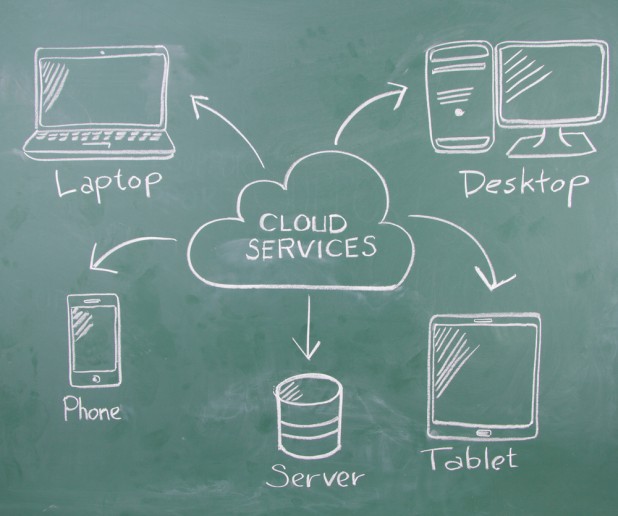I’ve been thinking a lot lately about the concept of a National Campus for Scotland. This idea has been floating around for a couple of years but ADES have now set their sights firmly on achieving this goal. And the goal of a national campus, supporting Scottish education, is a close fit with Education Scotland’s aim of delivering support for Curriculum for Excellence via Glow.
Content is King
 One of the difficulties we have with Glow is that, for many, it is seen as an irrelevant extra that offers very little to the classroom practitioner. I disagree with this general perception but I can understand it. But if you look beyond the quirky interface, lack of user customisation (RM Unify) you can find some really strong content. Twig on Glow is a great resource, Blogs/ePortfolios are used all over the country and offer a meaningful way to achieve some of the aims set out in BtC5, GlowTV has shown how well the AdobeConnect video conferencing can be used to capture national (and local) discussions and events so that they can be played “on demand”, Gigajam is a great resource to get started playing with some musical instruments, plus you have the tools in Just2easy and shortly Office WebApps, and already you should have access to a first class integrated productivity suite in Office 365. What is good about Glow, predominately, is the content. The tools to build communities are currently limited and this can lead to a sense of “where is everyone?”. Don’t get me wrong, you can create communities in Glow, for example the CPD community in Glow has well over 2000 users, which is more than twice the user uptake of similar organic communities Pedagoo and CompEdnet, and it demonstrates what can be done with what is there.
One of the difficulties we have with Glow is that, for many, it is seen as an irrelevant extra that offers very little to the classroom practitioner. I disagree with this general perception but I can understand it. But if you look beyond the quirky interface, lack of user customisation (RM Unify) you can find some really strong content. Twig on Glow is a great resource, Blogs/ePortfolios are used all over the country and offer a meaningful way to achieve some of the aims set out in BtC5, GlowTV has shown how well the AdobeConnect video conferencing can be used to capture national (and local) discussions and events so that they can be played “on demand”, Gigajam is a great resource to get started playing with some musical instruments, plus you have the tools in Just2easy and shortly Office WebApps, and already you should have access to a first class integrated productivity suite in Office 365. What is good about Glow, predominately, is the content. The tools to build communities are currently limited and this can lead to a sense of “where is everyone?”. Don’t get me wrong, you can create communities in Glow, for example the CPD community in Glow has well over 2000 users, which is more than twice the user uptake of similar organic communities Pedagoo and CompEdnet, and it demonstrates what can be done with what is there.
Do we REALLY need a National Online Campus (NOC)?
As we all know, our education sector is facing continued cuts in funding. A NOC could allow us to do more with less in difficult financial times. Often we have to be our most inventive when we have to manage limited resources. If we want to offer a wide and varied curriculum to our learners then we need to adopt new models of learning.
The senior phase curriculum needs greater support and a NOC could allow a greater selection of certificate courses to be offered and could support learners at all levels from Nat 4 to Advanced Higher.
A NOC could provide subject specialist input into Primary classes, exposing learners to experiences which would not be available in their local school. Think a “virtual” visiting science or history teacher from the local secondary or a primary teacher with a specific skill, say in modern foreign languages. There are opportunities with a NOC to strengthen the links within local school groups to support each other.
Also a NOC could allow learners in rural areas to engage with “visiting” speakers which they may not otherwise see. GlowTV has show how these can work really well and the ability watch the playback again and again is one of its keys strengths.
What about “the Flip?”
There is an increasing body of evidence to suggested that using a Flipped Classroom model can improve outcomes for learners.
What is a “Flipped Classroom?” – just in case you don’t know or were afraid to ask! Instead of learners coming to class to hear a lesson and work on problems and questions individually at home, the lesson is instead put online for learners to watch before class. There is also time to interact with the teacher and other learners through tools like online discussions and social media.
This model not only allows learners to go through the lesson at their own pace, but it also allows the teacher to maximize interaction with learners. Because when they get to class, it’s time to get to work. Instead of learners listening passively to a lesson, they are engaged in hands on or active learning; they might tackle problems together with help from the teacher. In the classroom, learners can question elements of the lesson that they didn’t understand or need further support with. In this way, learners can be accelerated through the curriculum as well as being provided with more time to absorb information and develop skills.
Flipped classrooms work for just about any subject– it started with Chemistry but has since spread right across education practice. Reasons for flipping classrooms rest primarily on decades of research into the gains in learning made when engaged in active, collaborative work.
And doesn’t the concept of the flipped classroom fit perfectly with Curriculum for Excellence? Changing the emphasis of our teaching from delivering knowledge to learners to active learning where the learner is directly responsible for leading his or her own learning. Focusing the teacher’s time with learners on developing skills and supporting learner understanding rather than speaking knowledge at them and hoping that it will stick.
A model for failure
A simple concept of a NOC is to use Glow to deliver remote lessons by a teacher or group of teachers in real time. Learners attend actually class lessons remotely using GlowMeet (Microsoft Lync or other similar technology) at predefined times and classwork is submitted via email or posted online. The lessons could be recorded for those that can’t make the class time.
A Glow Group (Sharepoint Team Area or similar shared space) is used to post learning materials/resources for members of the group, those members being the teachers and learners. The teacher or teachers download assessments and review learner work, providing feedback to those “remotely” taking the class via the online area.
Why will this fail? It’s not learner focused, this is just replacing what we currently do and removing a teacher from the remote end. It doesn’t support the learner to progress, it becomes tied into school timetables and the availability of the teacher resource. There isn’t a “flipped” part to the model, lessons are delivered “just in time” and a learner’s progression through the course is at the pace of the teacher. Glow (the new Office 365 version) doesn’t (yet?) have a dedicated assessment engine to allow learners to complete assessment online, neither does it yet have the learner analytics to show which learners are accessing online content, when and for how long. There are no learning analytics to track learner activity or engagement and no simple tools to monitor learners and intervene when required.
This model of a NOC is not sustainable – it doesn’t front load the preparation of the course materials so that learners can progress through the resource at their own pace nor does it provide a bank of reusable resources which others can remix-reuse-redeploy. It’s essentially a closed classroom with some external participants. We need to be more ambitious.
Where are we now?
 Sugata Mitra launched his concept of a Building a School in the Cloud and his inspiring vision of Self Organised Learning Environments (SOLE) at TED2013 in February this year. I’m sure we have all seen learners in our classrooms who self-organise, who find resources, are motivated and essentially learn by themselves. Sugata Mitra’s “Hole in the Wall” was just this self-organised learning by those interested but I often think of all those other learners in the slums and villages of India who were not motivated by these computers dropped into their environment or were not able to access the computers he provided because of others hogging the resource or bullying them to stay away.
Sugata Mitra launched his concept of a Building a School in the Cloud and his inspiring vision of Self Organised Learning Environments (SOLE) at TED2013 in February this year. I’m sure we have all seen learners in our classrooms who self-organise, who find resources, are motivated and essentially learn by themselves. Sugata Mitra’s “Hole in the Wall” was just this self-organised learning by those interested but I often think of all those other learners in the slums and villages of India who were not motivated by these computers dropped into their environment or were not able to access the computers he provided because of others hogging the resource or bullying them to stay away.
Don’t get me wrong, I’m a big fan of Sugata Mitra and his thoughts about how we can change education making it open, free and accessible for all. The proposition of enquiry based learning through Self-Organised Learning Environments (SOLE) based on his experiences of the “Hole in the wall” projects is an exciting prospect and is a strong fit with the principals of Curriculum for Excellence particularly in the primary/junior phase curriculum.
His “School in the Cloud” concept is much closer to where we should be going with our National Online Campus but I believe that our way forward is somewhere between the “Hole in the Wall”/SOLE and VLE type systems (of which Scholar is one example). Why? Because we have great teachers.
Er…it’s all about the teacher?
Teacher’s make a difference and we need a National Online Campus which maximises the efficiency and effectiveness of that resource. Teachers change lives, teachers think of 30 different ways to explain a concept until they find the one that fits the learner.
Learning needs to be a personalised, customised, dedicated service where the teacher is supported by sophisticated learning technology that provides details about how a learner makes progress, his/her strengths/weaknesses, his/her level of engagement and so much more.
Every learner is different, each has different needs/ambitions/ideas and a National Online Campus should be a platform which supports the learner to progress at his/her own pace while providing key data to the teacher via analytics. These analytics will highlight when the teacher should intervene in the learning process to get the learner back on track.
If we genuinely want a fundamental shift in how learning is organised, managed and delivered we need to harness the power of the cloud to trigger and support teacher/learner interactions. Often teachers know instinctively when a learner needs additional support but at other times we could identify a need, using analytics and tracking data, before it becomes a bigger issue for the learner.
Many learners, particularly in the senior phase, can make progress without the teacher, they have the maturity and drive to take full responsibility for their own learning and have made use of the active learning strategies deployed in their earlier experience of CfE to progress. But many learners need the teacher, not just in terms of providing support and encouragement – which for some will be enough, but in terms of a trusted source of enlightenment – the last and most important piece of the personalised, customised, dedicated learning experience.
What do we need for a successful National Online Campus?
Everything in the psychology of learning shows that repeated access to content is important for learners. This is why we practice questions when we do revision, why we set the same task, in different contexts, over and over etc. Learners need time to digest/commit to memory what they have been exposed to however how many teachers teach the same lesson again and again to their learners?
 Revolution in Content
Revolution in Content
We’ve seen how Khan Academy, TEDEx and many others are revolutionising educational content. Our NOC should provide simple tools to include this content in our courses. Also, we should, by default, make our content open for the world. Let’s contribute to the democratisation of learning and the open education revolution!
What are the tools which would allows us to provide the NOC look like?
Course planner
In the course planner the practitioner can lay the course out, plot the pathway through the learning, break down the course into separate logical progressions, create learning intentions for each block of study, identify when learners achieve milestones with the course and flag points where assessment activity can be carried out. The course planner provides a strategic overview of the course. iTunesU has a course manager tool that provides some of this functionality. The NOC will take the pain out of creating and uploading your own video content (just as YouTube and Vimeo do).
Web Clipping
 A web clipper, where the resources a teacher/course creator finds on-line can be snipped and clipped into course/lesson material will bring the best of the web directly into learning resources without the fuss of downloading/upload etc. Evernote has just such a tool and Open Tapestry is just this kind of course creation tool and it could be linked up to our existing Glow authentication through single sign-on (SSO).
A web clipper, where the resources a teacher/course creator finds on-line can be snipped and clipped into course/lesson material will bring the best of the web directly into learning resources without the fuss of downloading/upload etc. Evernote has just such a tool and Open Tapestry is just this kind of course creation tool and it could be linked up to our existing Glow authentication through single sign-on (SSO).
Reuse-Remix-Redeploy
All the great content we already have in Glow, all this content that can be clipped, tagged and organised from the web plus the videos and resources that teachers generate themselves can all be part of a searchable repository of learning objects (phew!). A teacher, constructing a course, can search for courses and content already created and pull them into their own creation.
If you don’t like part of a course someone else has built, you can “fork it” – copy it and then change it without affecting the original. And this concept of remixing open education content is just borrowed from the opensource software community where we have been doing it for years (and years!).
And assessment has to be part of the toolset, the teacher needs tools which will allow a variety of questions to be set, some will be marked by the computer in the cloud and others will be marked, from digital image, by the teacher or teachers.
Adaptive Learning/Learning Analytics
 And underneath this we need to understand how learners are using the content, interacting with it and making progress through it. Using our assessment evidence together with data about engagement with content, the learner’s personal pathway through the content and assessment can be adapted to meet the learners needs, multiple pathways through the learning can be created.
And underneath this we need to understand how learners are using the content, interacting with it and making progress through it. Using our assessment evidence together with data about engagement with content, the learner’s personal pathway through the content and assessment can be adapted to meet the learners needs, multiple pathways through the learning can be created.
Using an overview of assessment evidence and data generated by learning analytics we can target teacher interventions in a more focused manner. Tracking in the cloud, supporting teacher interventions.
It’s all on the menu
With such a model, learners can engage in courses of study at any time, with multiple exit points. If we can get this right we can create a platform for learning which means that we no longer have to prepare for the big annual test – The Exam. SQA have already committed to on-line on-demand assessment by 2020.
And finally…
A National Online Campus could fundamentally change how we provide education to learners in Scotland particularly in the senior phase. We could stop seeing our education experience as a conveyor belt process where each year of the senior phase is a rush to an end point examination. Instead learners could opt into courses when it suits them, supported by a teacher, but that teacher could be anywhere. But the key is that we create a platform which includes collaboration, encouragement and admiration for learners from teachers and others. Learning doesn’t always emerge from connected learners using technology, it often needs a guide, a teacher to set the compass and keep the wandering travellers on the path.



HolyroodParis
RT @charlie_love: A National Campus in the Cloud? We can make it happen #ltt2013 http://t.co/X7QOxDctOY Fixed the link!
JayeRHill
RT @charlie_love: A National Campus in the Cloud? We can make it happen #ltt2013 http://t.co/X7QOxDctOY Fixed the link!
JayeRHill
@charlie_love got it..thanks
olliebray
RT @charlie_love: A National Campus in the Cloud? We can make it happen #ltt2013 http://t.co/X7QOxDctOY Fixed the link!
ScotEduBlogs
ScotEduBlogs: A National Campus in the Cloud? http://t.co/GMZbVfsYJZ
islayian
RT @charlie_love: A National Campus in the Cloud? We can make it happen #ltt2013 http://t.co/X7QOxDctOY Fixed the link!
fkelly
RT @charlie_love: @islayian @olliebray @JayeRHill @HolyroodParis thanks for the RTs http://t.co/X7QOxDctOY A National Campus in the Clou …
charlie_love
RT @ScotEduBlogs: ScotEduBlogs: A National Campus in the Cloud? http://t.co/GMZbVfsYJZ
irvingm
RT @charlie_love: @islayian @olliebray @JayeRHill @HolyroodParis thanks for the RTs http://t.co/X7QOxDctOY A National Campus in the Clou …
charlie_love
@charlie_love: A National Campus in the Cloud? We can make it happen http://t.co/X7QOxDctOY
hawkins_joyce
RT @charlie_love: @charlie_love: A National Campus in the Cloud? We can make it happen http://t.co/X7QOxDctOY
bignagtheory
“@charlie_love: A National Campus in the Cloud? make it happen http://t.co/AV73qObrij” Great summary of Ed tech potential #rgcdevicetrial
TonyRafferty2
RT @charlie_love: @JayeRHill http://t.co/X7QOxDctOY
GerryDougan
RT @charlie_love: A National Campus in the Cloud? We can make it happen #ltt2013 http://t.co/X7QOxDctOY Fixed the link!